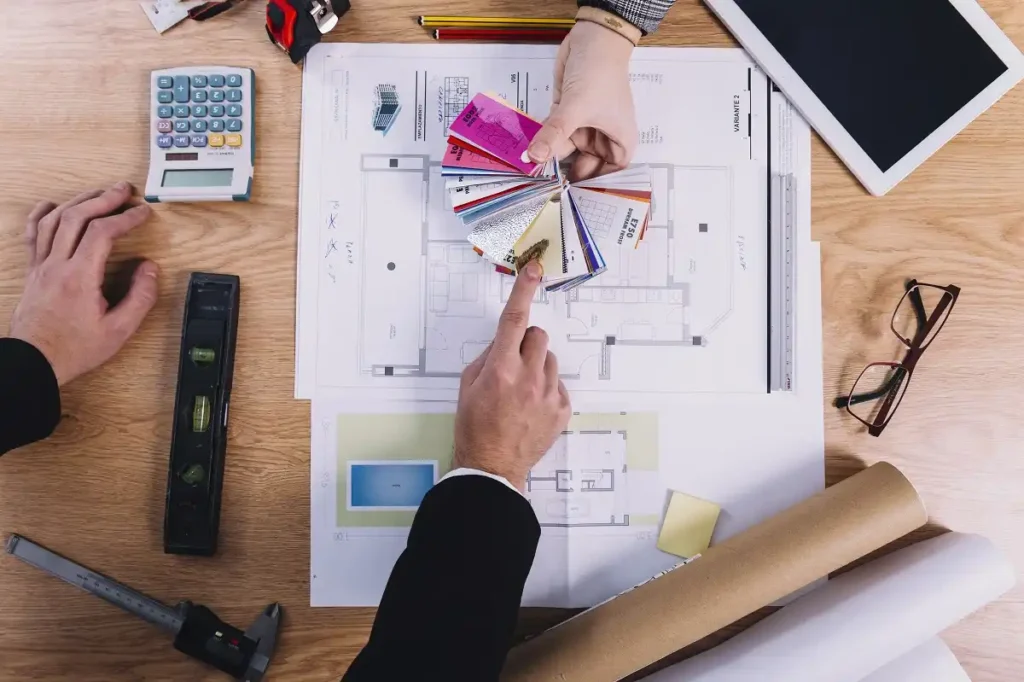If your home feels “fine, but not quite right,” chances are the issue isn’t your furniture or décor—it’s the layout. Over time, lifestyles change, but rooms don’t always keep up. One of the smartest ways to personalize your living space is to rethink how your home is arranged. Adjusting the layout impacts how rooms connect, how you move through them, and how each space supports your daily life. A refreshed layout creates more comfort, better function, and a natural flow that makes your house feel like home again. And if your space already has airy, breezy vibes, you can elevate that with thoughtful planning and professional design services for coastal homes.
Why Layout Is More Powerful Than Décor
It’s tempting to reach for new furniture, rugs, or artwork when a space feels uninspiring. But even the most stylish purchases won’t fix a clunky layout. A poorly placed sofa can disrupt conversation, a dining table in a high-traffic path makes meals stressful, and a television in the wrong spot can turn family movie night into a glare-filled battle.
Layout, on the other hand, establishes the foundation. It determines how easily you move, how comfortable each area feels, and whether the space reflects your lifestyle. Think of layout as the “tailoring” of your home. Décor adds personality, but layout makes everything fit perfectly.
Signs of a strong layout include:
- Clear pathways: Enough room to walk without zig-zagging.
- Defined focal points: A fireplace, view, or entertainment center anchoring the room.
- Purposeful zones: Conversation areas, reading corners, or a work nook, each naturally flowing without crowding.
How to Rethink Your Layout Step by Step
The best way to start is by looking at your daily routine. Where do bottlenecks happen? Which corners collect clutter? Which rooms sit unused? Once you identify the problem areas, you can test new solutions.
- Shift major furniture. Float the sofa instead of keeping it against the wall. Angle the bed differently to improve circulation.
- Experiment with rugs. A well-sized rug defines zones and creates natural boundaries.
- Test lighting with placement. Move a lamp or install a sconce to see how the feel of the room changes.
- Try a new traffic flow. Live with the change for a week. Note what feels easier and what feels awkward.
If your adjustments spark ideas for larger renovations—like opening up a wall or adding built-ins—you can plan them later. And for inspiration or expert input, you can visit Ten Key Home & Kitchen Remodels OKC for examples of layouts that balance style and functionality.
Balancing Open Concept and Defined Spaces
Open-concept layouts are popular because they encourage light and social interaction. But defined rooms have their benefits too: privacy, noise control, and clear function. The key isn’t to pick one or the other, but to find a balance.
- Use partial dividers like bookcases, two-sided fireplaces, or wide doorways to connect spaces while preserving zones.
- Break up long, narrow rooms into thirds—one for lounging, one for dining, and one for storage or a workspace.
- Keep sightlines open while still giving each zone its visual anchor.
This hybrid approach helps homes feel spacious yet purposeful, perfect for both entertaining and relaxing.
Kitchens and Dining: Function First
No room benefits more from layout improvements than the kitchen. It’s the busiest zone in most homes, and even small tweaks create major daily wins.
- Keep the work triangle tight: sink, stove, and fridge should form an efficient loop.
- Place the trash and dishwasher in convenient, non-blocking positions.
- Carve out landing zones for groceries and prep work.
- In dining areas, ensure there’s space to pull chairs back without disrupting circulation.
When a kitchen layout is functional, meal prep feels smoother, gatherings run more easily, and the entire home benefits from the flow.
Living Room: Float and Frame
The biggest mistake in living rooms is pushing all the furniture to the walls. Instead, float the main seating on a rug to create a destination space.
- Keep coffee tables within 14–18 inches of seating.
- Use side tables for balance and convenience.
- Choose a focal point—fireplace, TV, or view—and angle furniture toward it.
The result is a more intimate, conversational layout that still feels open.
Bedrooms: Position with Intention
The bed’s position can make or break bedroom comfort. Place it so you can see the door, but not directly in its line. This creates a sense of security and better flow.
- Leave clear space on both sides for movement.
- Size nightstands for actual use—charging, reading, or minimal storage.
- If space allows, add a chair or bench to create a retreat corner.
Even small bedrooms benefit from smart placement that maximizes serenity.
Lighting Layers and Storage Solutions
Layout isn’t just about where walls and furniture sit—it’s also about how light and storage work within the space.
- Lighting: Every room should have ambient (overhead), task (desk lamps, under-cabinet), and accent (sconces, uplighting) layers. This gives flexibility and enhances the mood of each zone.
- Storage: Clutter often stems from layout gaps. Add baskets near entryways, use hidden ottomans in living rooms, or flank sofas with tall cabinets.
When lighting and storage support your layout, the entire space feels more functional and calming.
Small Tweaks with Big Impact
You don’t always need a full renovation to transform your layout. Try these easy upgrades:
- Swap swing doors for pocket or sliding doors to eliminate collisions.
- Widen narrow openings by a foot for a more open feel.
- Use built-ins or room dividers to create cozy zones in open areas.
These little changes often deliver the same impact as a full remodel—without the cost or disruption.
The Takeaway
Changing the layout is the most effective way to personalize your living space. Unlike temporary décor, layout improvements address how your home truly functions, shaping everything from comfort to style. With a thoughtful plan, a few test runs, and a focus on flow, your home can feel brand new—without needing to start over.



